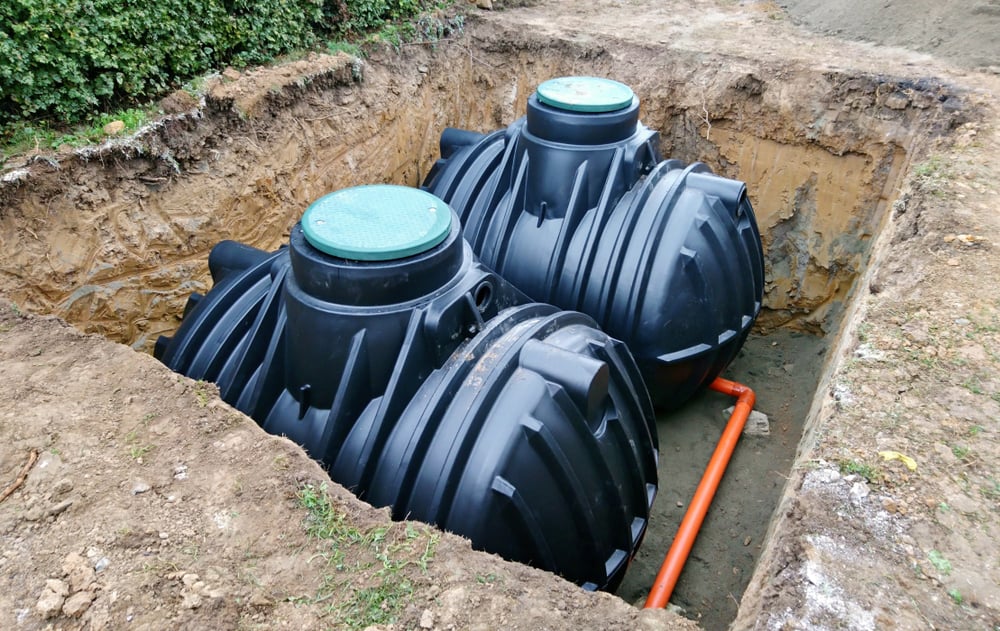Rainwater Harvesting Methods

There are different types of rainwater harvesting systems, and their cost varies depending on the scale, technology and complexity of the installation. However, all systems have a common objective: collecting rainwater and using it in the building, reducing water consumption from the utility supply. A major advantage of rainwater harvesting is that it can be applied in various building types, ranging from small residential to large industrial projects.
An increased awareness of climate change is encouraging building owners to incorporate some form of water harvesting to their projects. In buildings of all sizes, maximizing the usefulness of natural resources has never made more sense.
There are many types of water harvesting systems, the most simple system is using water butts but its application is limited. Other rainwater systems such as gravity feed and pump feed are more complex and can be installed to provide for daily living requirements such as washing clothes or flushing the toilet.
Conserve water and reduce your pumping costs.
Rain Barrels
Rain barrels are the most basic form of rainwater harvesting. They are large plastic containers that are usually located in gardens, to collect rainwater directly from rainfall or alongside gutters. Rain barrels are mainly kept for watering garden plants and flowers.
This type of collecting system is mostly used in residential buildings, and users with large gardens will see a significant reduction of water consumption from the utility service. This system only requires purchasing the rain barrels and their corresponding accessories.
Pump Feed Systems
These rainwater collection systems depend on a pump, as their name implies. They can be classified into direct and indirect systems.
Directly Pumped Systems
- Submersible: This is the most common configuration, especially in residential buildings, and its installation is simple. The pump is located within an underground tank, and harvested water is pumped directly to the connected appliances. Tanks must have a backup pipe connected to the utility supply, in case they run dry.
- Suction-based: In this system the pump is not located inside the tank, but instead within a control unit in the building. The control unit is connected to the utility service, so there is no need to fill up the tank if it runs low.
Indirectly Pumped Systems
This configuration uses a main tank located underground, and another inside the building at any level. Water is pumped from the harvesting tank to the internal tank. In turn, the internal tank has a booster pump to provide a pressurised supply at plumbing fixtures.
One benefit of this system is not having to feed water from the utility connection to the underground tank. This setup offers great flexibility, since booster pumps can be customized to meet the flow and pressure requirements of the building.
Gravity Feed Systems

These systems are normally installed at the top of the building, using gravity to distribute collected rainwater to the different appliances. Some gravity feed have a hybrid design that includes a backup pump.
Hybrid Systems
This configuration is similar to the indirectly pumped system mentioned above, but without the booster pump. The collected rainwater is pumped from the harvesting tank to an upper tank, and it then travels by gravity to individual appliances. When using this system, the pump only operates when the header tank needs to be filled. With this arrangement, the utility water supply is fed directly to the header tank if needed, not to the main underground tank.
Gravity-Only Systems
In certain situations, a system that works only with gravity may become possible, requiring no pump and consuming no energy. This system requires a particular arrangement, where rainwater is collected and filtered at the upper levels. This system is only viable there is the possibility of locating the storage tank below the gutters, but also higher that the appliances it will serve. This is the most energy efficient option, since only gravity is used for the collection and distribution of water.
Commercial and Residential Applications of Rainwater Harvesting
The main difference between commercial and residential applications of rainwater harvesting is scale, since the methods used have little change. Choosing the proper system for a project will depend mainly on two factors: the space available and the pressure required.
In domestic applications with limited space, pump feed systems are usually the most effective solution. Even when they consume electricity, water only has to travel small distances. Gravity feed systems are more effective in taller commercial buildings, since there is enough height to generate high pressure without pumping. Indirect pumped systems are recommended when gravity does not achieve enough pressure by itself.
A rainwater harvesting system can achieve synergy with water saving fixtures, minimizing the monthly water consumption of a building. Consider that this saves not only water, but also the associated pumping and heating costs.
Conclusion
Installing a rainwater harvesting system brings two main benefits. First of all, it reduces dependence on the utility supply and cuts down the corresponding water bill. There is also an environmental benefit, since the building with rainwater harvesting uses a natural resource more efficiently.

Michael Tobias
Michael Tobias, the Founding Principal of NY Engineers, currently leads a team of 50+ MEP/FP engineers and has led over 1,000 projects in the US
Join 15,000+ Fellow Architects and Contractors
Get expert engineering tips straight to your inbox. Subscribe to the NY Engineers Blog below.



